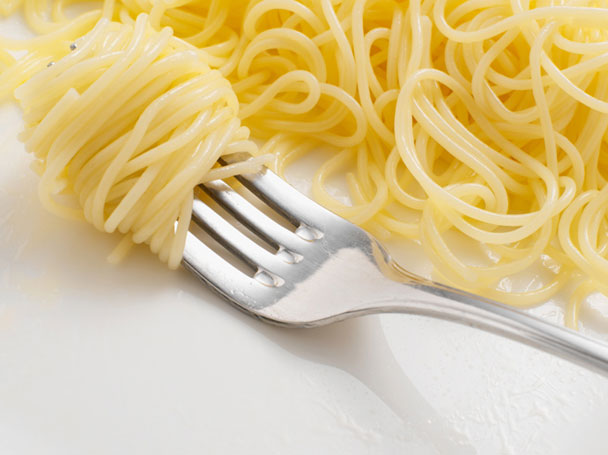
One of my all–time favorite acronyms is KISS: Keep It Simple, Stupid! This, you may not be surprised to learn, is the exact opposite of what I did in my early days in the Gourmet magazine test kitchen. In fact, simple cooking was the very antithesis to what my job was all about. It took me years and years to get simple.
In the late 1970s when I joined Gourmet, the magazine’s focus was still predominantly on Northern Europe and specifically France. The new executive food editor, Zanne Zakroff (now Zanne Stewart) and I had both attended the same cooking school in Paris—though not at the same time—and the subsequent two new food editors had also studied in Paris. With training like this, nobody dreamed of suggesting a menu of meatloaf with mashed potatoes and peas, or even a good roast chicken dinner. You might adore that at home, but back then it just wasn’t what you cooked in the test kitchen.
The first group of recipes I created for Gourmet appeared in the April 1978 issue under the heading “Gastronomie Sans Argent,” a monthly feature that had been a regular since the very first issue of the magazine. Its subtitle was priceless: “To Tease the Palate and Please the Purse.” (The early editors did love rhyming and alliteration.) I may have stayed within the budget with my creations (which was easy, because there was no budget), but who knows whether I tickled anyone’s palate? One thing is for sure: I didn’t make the recipes easy for the readers.
The article opened with an impossibly complicated ham–and–celeriac terrine that involved alternating layers of salads, all held together with a port aspic. As if that weren’t difficult enough, I decorated the top with a mosaic of tiny paper–thin pieces of ham and celeriac that was so OCD–precise it would drive anyone mad (it almost did me in). I’ll admit that the finished terrine was gorgeous and fawned over and photographed immediately, but I cringe now thinking about those who attempted to re–create it. Woe betide the reader who didn’t have a subscription or failed to save their back issues, because in order to make the essential glue for the dish, the port aspic, you needed the recipe from the four–months–prior January issue.
This was the first of ten recipes using ham, and the remaining nine weren’t much easier. The final one, Ham Soufflé Crepes with Lemon Sauce, was a real doozy. What was I thinking? What were we all thinking?
The truth is, we weren’t thinking—at least not about reality. The number of women entering the workforce was swiftly increasing, with a concomitant decrease in the time they could spare for cooking. As young working women, we in the Gourmet kitchen faced the same constraints in trying to feed ourselves well after a long day at the office. Too often we took the easy route and made dinner out of drinks and hors d’oeuvres at local watering holes.
In a sense, the complicated recipes also mirrored the complicated situation in the test kitchen. Simmering below the collegial surface of collaborative brainstorming and raunchy kitchen humor was a cauldron of unspoken competition among our group of four young French–trained cooks. Though nobody would dream of admitting it, each one of us was trying to outdo the other and flash our newly learned knowledge of French cooking. Like celebrity–name–droppers, bouquet garni, pâte brisée, and béchamel trilled from our lips in our schoolgirl–French accents. We strove to dazzle the phalanx of pearled and sweater–setted editors whose offices rimmed the test kitchen with our creative twists on the classics and our artistry in the photography studio.
We wouldn’t have felt we were doing our job if we had cooked simply. Classical French food was all about layering multiple flavors to make a unified masterpiece whose separate elements were difficult to detect. Imagine the cupboards and spice racks filled with specialty ingredients—how could we resist a pinch of this, a dash of that, and a dollop of something else? Competence was measured in the length and complexity of a recipe, not in one’s ability to crank out five easy suppers. Maintaining the reputation of Gourmet as the ultimate source of authenticity and “fine dining” was our obsession, and it fueled our adherence to classic technique, no matter how many columns of text it took to explain.
But as we approached the dawn of the 1980s, the seeds of change were already germinating. Editor–in–chief Jane Montant adored Italy and increasingly sent her travel writers off to cover various parts of the peninsula. Meanwhile, executive food editor Stewart, who was studying with Marcella Hazan, was convinced that Americans were ready to move away from the strictures of Escoffier and into the casual, straightforward style of cooking emblematic of Italy. In the summer of 1977, Stewart accompanied the doyenne of Italian cuisine to Bologna and in future years would return to Italy to study with Hazan at the Cipriani in Venice and Lorenzo de’Medici in Florence.
Cutting loose from the confines of classical French cooking was right up my alley. I was raised on noodle casseroles, so it wasn’t a big leap to adopt Italian pasta as my new big love. Fresh, dried—it didn’t matter; I adored it all. The dish that fascinated me the most at that time was also the simplest: spaghetti aglio e olio—spaghetti with garlic and oil. It’s considered so simple that Italian restaurants don’t tend to list it on the menu, though most will be happy to make it if you request it—because goodness knows they’ve always got the ingredients right at hand.
It took until September 2004—the Food and Movies Issue—for spaghetti with garlic to appear in the pages of Gourmet. That’s not so surprising when you consider that garlic was barely ever used in the early days of the magazine, and when it was, it was a single small clove. Although Jane Montant wasn’t opposed to garlic (she loved Italy, remember), she had a nose for it and whenever she caught a whiff, would come barreling into the kitchen, calling out in her deep, throaty voice: “Who's cooking garlic?”
The recipe we finally printed accompanied an article on Les Blank, the filmmaker, who used what he called “Smellaround” to deepen a viewer’s experience of his films. For showings of his movie Garlic Is as Good as Ten Mothers he would roast six heads of garlic in a toaster oven, filling the entire theater with the aroma.
I volunteered to come up with the recipe because I’d been working away at spaghetti with garlic and oil at home for years. In the process, I hijacked what’s meant to be a 20–minute dish—counting from when the pot of water goes on the stove to when the pasta lands on the plate—and made it something more complex than necessary. My quest was to distribute the golden garlic as evenly as possible, so I’d set some of it aside and toss it in with the cooked spaghetti in stages. I was also afraid the hot pepper flakes would burn, so I cooked them separately from the garlic. Of course, I’ve since learned these two extra steps are unnecessary, but even so, it was my version that ended up on the cover of Ruth Reichl’s third memoir, Garlic and Sapphires.
In the world of the food–obsessed, there are chileheads who can’t get enough Scoville heat units in their habañeros and then there are garlic nuts like me, for whom there never seems to be enough garlic. For years I constantly upped the number of cloves, because those crispy shards of fried garlic disappeared into the tangle of noodles and I found I always wanted more. Scandalous as it may sound, I’m happy now at about a full head of garlic per half pound of spaghetti. Les Blank would love it.
It wasn’t until I was in a big rush one evening that I finally got the dish right—and found true simplicity. Who knows whether the method I now use would even be deemed Italian by a native? But at this point, frankly, I don’t care.
While the spaghetti is bubbling away in a big pot of salty boiling water, I cook my pile of sliced garlic together with some hot pepper flakes in a good amount of olive oil (the garlic slices need to be able to swim) until it is pale golden, then I push the skillet to the back of the stove to cool off. Next, I quickly chop some parsley. When the spaghetti is al dente, I scoop a tongsful of it into my big serving bowl, and then in one fell swoop, dump the entire contents of the skillet over the spaghetti. A generous drizzle of fresh extra–virgin and a scattering of the parsley tops it all off. I thrust the tongs into the noodles and bring the bowl to the table. As I dish it up, the garlic chips and parsley naturally distribute themselves, while the oil and pasta water clinging to the spaghetti lubricate everything. Duh. It really is this simple.
Kemp Minifie was wrapped up in all aspects of food at Gourmet magazine for 32 years, and is now a part of the Gourmet Live team. For more tried and tested tips and tricks, check out her weekly Kemp’s Kitchen column on the Gourmet Live blog.

